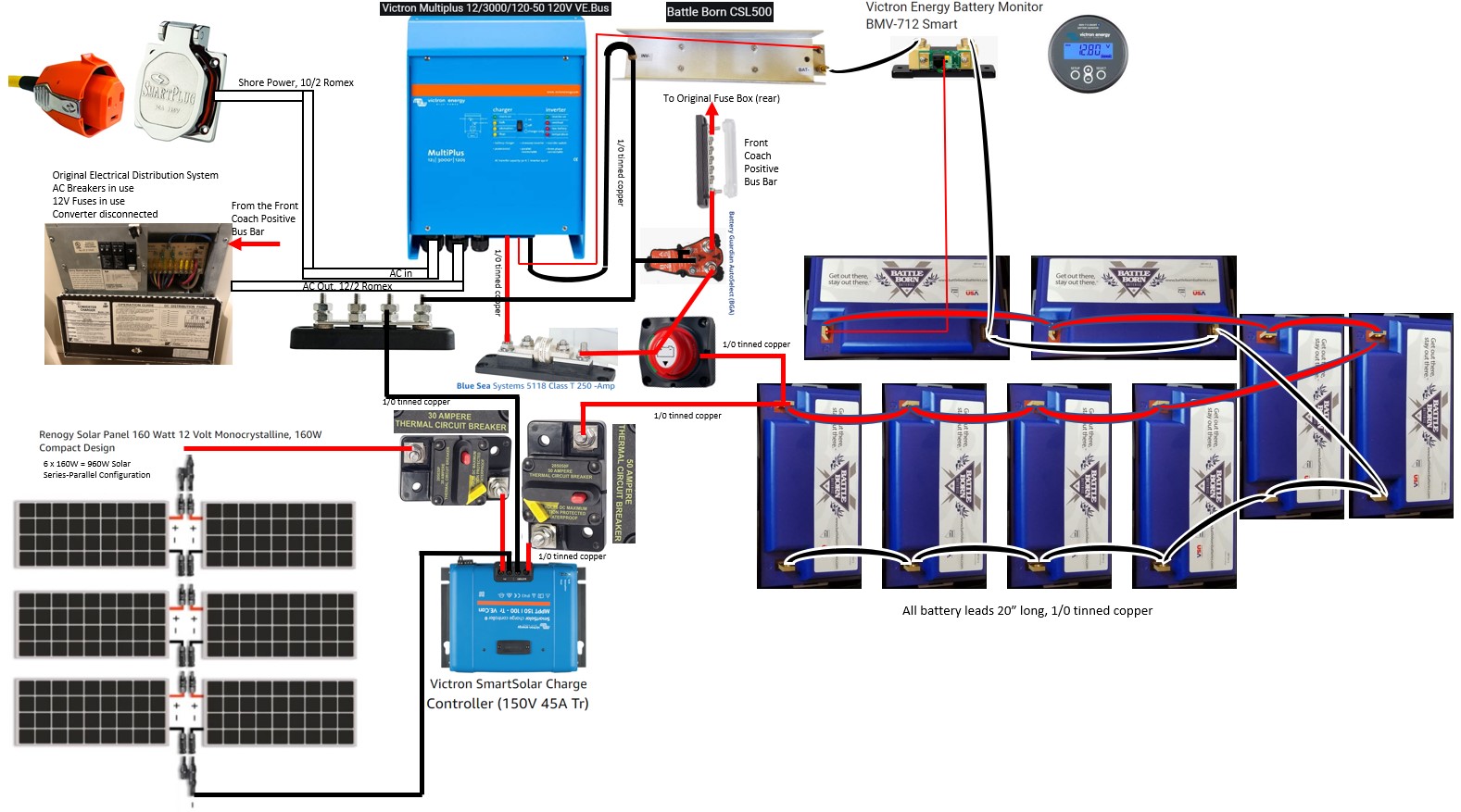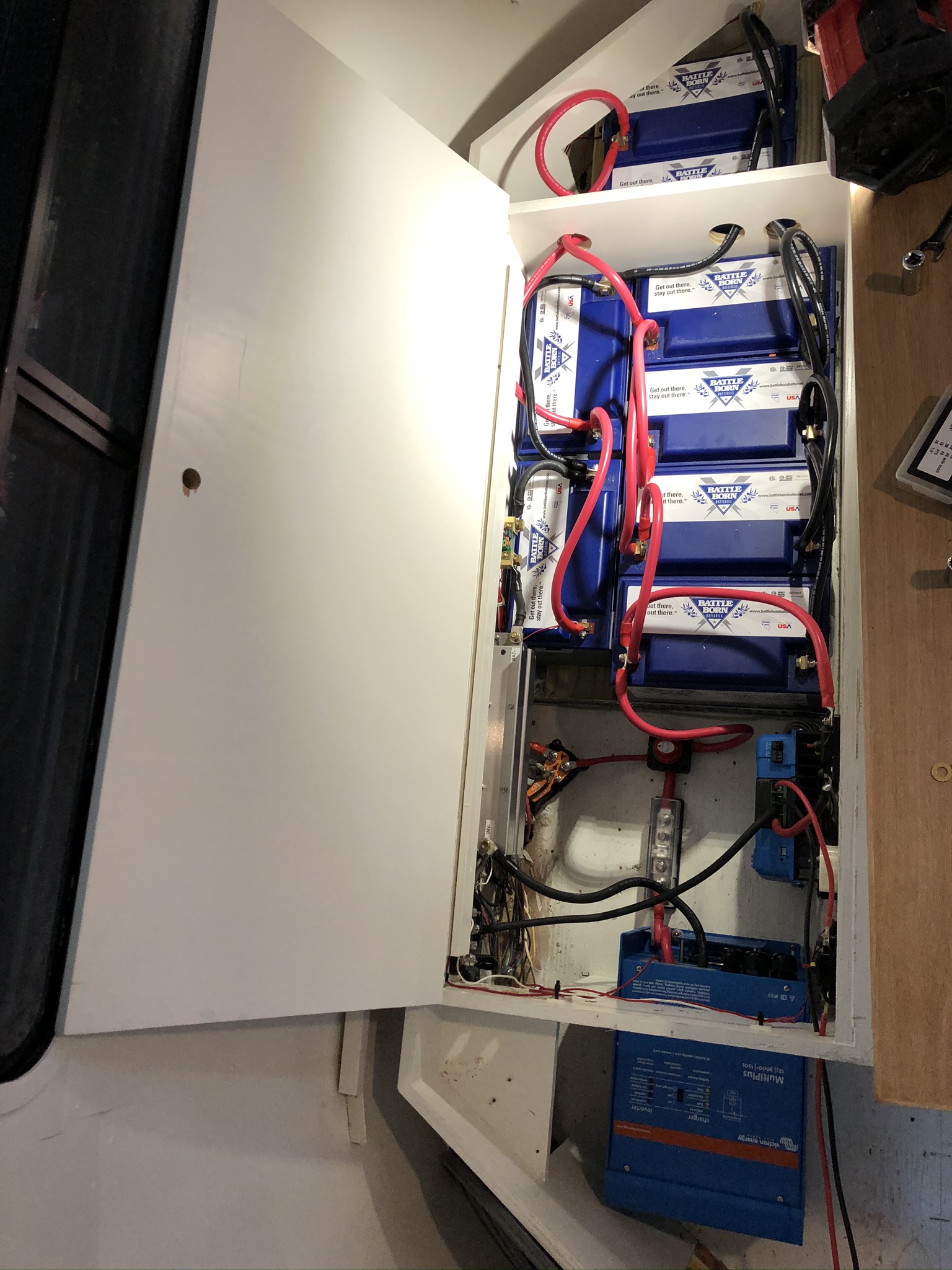Hi Everyone,
Have asked a few questions in the past with my ugly DIY install, have gotten lots of constructive feedback and finally got home so that I could rip it all apart and start over. Looks a bit less like kabalsalat, the worst of it that's left is the original Airstream wiring. For anyone that's curious, prior thread is here:
Here's a snapshot of the system today, completely reconfigured and rewired, upgraded the battery leads to 1/0 as recommended. Got rid of the massive industrial bus block, I think that was the main source of issues based on the condition it's in when I pulled it out, looks like two of the positive leads had worked themselves a bit loose. Added the battery disconnect per guidance, no-brainer that should've been there from the beginning. Lots of folks appear to put a disconnect between the MPPT and the batteries as well, but this seems redundant with the circuit breakers as you can manually trip the breaker and achieve the same goal.

Couple of known items are to re-run shore power (no shore power included in this photo) and hook up two existing air circulation fans.
One more thing - hard to get a gauge from the photo, but all of the battery leads are the same length, 20". Tried to be efficient with the length, but it was a bit tricky since I have them in two different orientations to save as much space as possible. The negative lead is pulled off the top left battery, through the CSL, then the BMV shunt, then runs to the inverter. The positive lead is taken from the bottom left battery, straight into the battery disconnect, then to the inverter & BGA together, then positive bus bar for the DC loads.
Specific wrap-up questions:
- Am I missing any other disconnects? Various schematics seem to include one from the MPPT & tow vehicle trickle charger, but I don't see a point if the MPPT is protected by breakers and I don't have a trickle charger.
- Do I have the order correct on the negative side? Should it be CSL then shunt as I currently have it, or do I need to flip that? I know the shunt should be the first thing load-wise, but my reasoning was that the CSL doesn't draw anything on a stable basis.
- As I slim down my DIY'd and over-engineered system, I review the Multiplus specs and it looks like my Go Power automatic transfer switch is redundant with the built-in capability of the Multiplus. Is there any reason I should still include the Go Power automatic transfer switch when I re-run the shore power? I'm re-running a completely new lead & replacing the inlet, so it would be a convenient time to remove the transfer switch if it is unnecessary.
A bit about my system overall:
2003 Airstream
960W renogy panels, 6 x 160W each hooked up in Series-parallel configuration (two sets of 3 panels in series, then paralleled into the MPPT)
800 Ah BattleBorn batteries, 8 x 100 Ah each
BGA-225 battery guard
Victron Multiplus 12/3000/120-50 120v VE Bus
Victron SmartSolar Charge Controller (150V 45A Tr)
Victron BMV-712
Current Surge Limiter (CSL for short) (https://battlebornbatteries.com/product/current-surge-limiter/)
Go Power! TS-30 30 Amp Automatic Transfer Switch (likely to be deleted)



